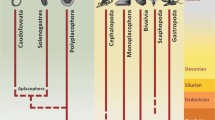Abstract
Ferrochelatase with an Mr of 42,700 Da and a pI of 7.35 has been purified to homogeneity from chironomidae larvae. The activity of the enzyme reached maximum at pH 7.8 and decreased with the increase of pH. The enzyme activity varied with temperature and showed maximum activity around 37°C. The purified enzyme was active towards protoporphyrin but inactive towards other porphyrins. The specific enzyme activity of ferrochelatase from chironomidae is about 10-fold higher than that of the rat. Electrophoresis of the purified fractions shows that the enzyme contains only one single polypeptide. The soluble ferrochelatase contained one mole of iron in each mole of the enzyme. The N-terminal sequence analysis of the enzyme shows a high percentage of conserved regions of the enzyme among other species. The enzyme properties are similar to those of the mammalian ferrochelatases except with slightly higher specific activity. Chironomidae ferrochelatase appeared to be more heat resistant and less susceptible than its mammalian equivalent to inhibition by lead.
Similar content being viewed by others
References
Ulvik R, Romslo I: Studies on the utilization of ferritin iron in the ferrochelatase reaction of isolated rat liver mitochondria. Biochim Biophys Acta 541: 251–262, 1978
Muppala V, Lin CS, Lee YH: The role of HNF-1 alpha in controlling hepatic catalase activity. Mol Pharmacol 57: 93–100, 2000
Burden AE, Wu CK, Dailey TA, Busch JLH, Dhawan IK, Rose JP, Wang BC, Dailey HA: Human ferrochelatase: Crystallization, characterization of the (2Fe-2S) cluster and determination that the enzyme is a homodimer. Biochim Biophys Acta 1435: 191–197, 1999
Ferreira GC, Franco R, Lioyd SG, Moura I, Moura JJG, Huynh BH: Structure and function of ferrochelatase. J Bioenerg Biomembr 27: 221–229, 1995
Taketani S, Mohri T, Hioki K, Tokunage R, Kohno H: Structure and transcriptional regulation of the mouse ferrochelatase gene. Gene 227: 117–124, 1999
Day AL, Parsons BM, Dailey HA: Cloning and characterization of gallus and Xenopus ferrochelatases: Presence of the (2Fe-2S) cluster in nonmammalian ferrochelatase. Arch Biochem Biophys 359: 160–169, 1998
Medlock AE, Dailey HA: Examination of the activity of carboxyl-terminal chimeric constructs of human and yeast ferrochelatase. Biochem 39: 7461–7467, 2000
Gora M, Rytka J, Labbe BR: Activity and cellular location in Saccharomyces cerevisiae of chimeric mouse/yeast and Bacillus subtilis/yeast ferrochelatase. Arch Biochem Biophys 361: 231–240, 1999
Dailey HA: Purification and characterization of membrane-bound ferrochelatase from Rhodoseudomonas sphaeroides. J Biol Chem 257: 14714–14718, 1982
Prasad ARK, Dailey HA: Effect of cellular location on the function of ferrochelatase. J Biol Chem 270: 18198–18200, 1995
Cranston PS, Armitage PD, Pinder LCV: In: The Chironomidae: Biology and Ecology of Non-Biting Midges. Chapman & Hall, NY, 1995, pp 15–40
Laemmli UK: Cleavage of structural proteins during the assembly of the head of bacteriophage T4. Nature 227: 680–685, 1970
Robertson EF, Dannelly HK, Malloy PJ, Reeves HC: Rapid isoelectric focusing in a vertical polyacrylamide minigel system. Anal Biochem 167: 290–294, 1987
Porra RJ, Jones OTG: Studies on ferrochelatase. Biochem J 87: 181–185, 1963
Cameron BF: Determination of iron in heme compounds. Anal Biochem 11:164–169, 1965
Taketani S, Tokunaga R: Rat liver ferrochelatase: Purification, properties and stimulation by fatty acids. J Biol Chem 256: 12748–12753, 1981
Braford MM: A rapid and sensitive method for quantitation of microgram quantities of protein utilizing principle of protein-dye binding. Anal Biochem 72: 248–254, 1976
Mailer K, Poulson R, Dolphin D, Hamilton AD: Ferrochelatase: Isolation and purification via affinity chromatography. Biochem Biophys Res Commun 96: 777–784, 1980
Miyamoto K, Kanaya S, Morikawa K, Inokuchi H: Overproduction, purification, and characterization of ferrochelatase from Escherichia coli. J Biochem Tokyo 115: 545–551, 1994
Hansson M, Hederstedt L: Purification and characterization of a water-soluble ferrochelatase from Bacillus subtilis. Eur J Biochem 220: 201–208, 1994
Dailey HA, Sellers VM, Dailey TA: Mammalian ferrochelatase. Expression and characterization of normal and two human protoporphyric ferrochelatase. J Biol Chem 269: 390–395, 1994
Taketani S, Tokunaga R: Rat liver ferrochelatase. Purification, properties, and stimulation by fatty acids. J Biol Chem 256: 12748–12753, 1981
Tanaka M, Iio T, Tabata T: Ferrochelatase: Isolation and characterization. J Biol Chem Tokyo 10: 619–624, 1987
Sellers VM, Wang KF, Johnson MK, Dailey HA: Evidence that the fourth ligand to the (2Fe-2S) cluster in animal ferrochelatase is a cysteine. J Biol Chem 273: 22311–22316, 1998
Author information
Authors and Affiliations
Corresponding author
Rights and permissions
About this article
Cite this article
Leung, Y.K., Ho, J.W. Purification and properties of ferrochelatase from Chironomidae larvae. Mol Cell Biochem 220, 161–167 (2001). https://doi.org/10.1023/A:1010976829463
Issue Date:
DOI: https://doi.org/10.1023/A:1010976829463




